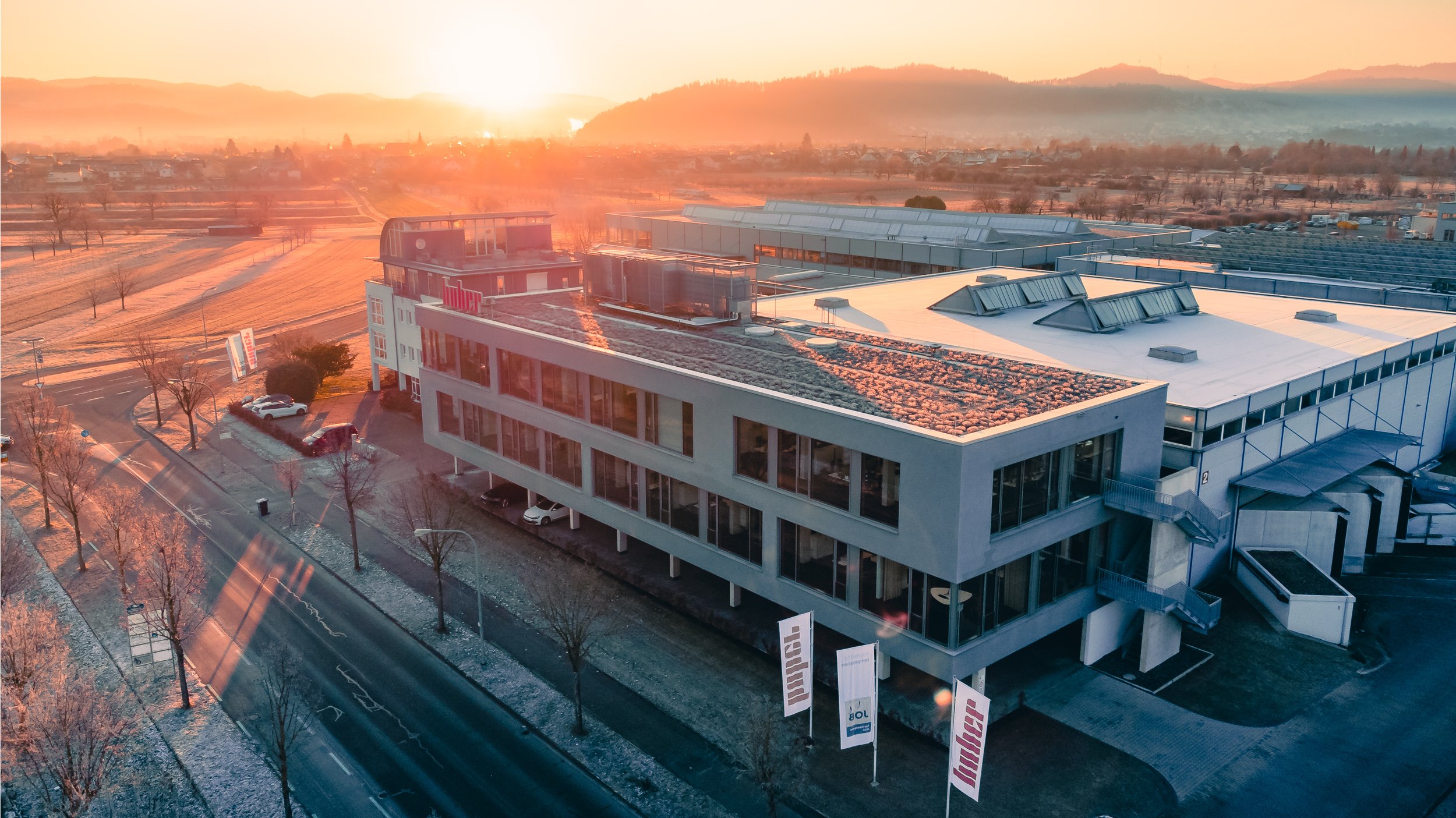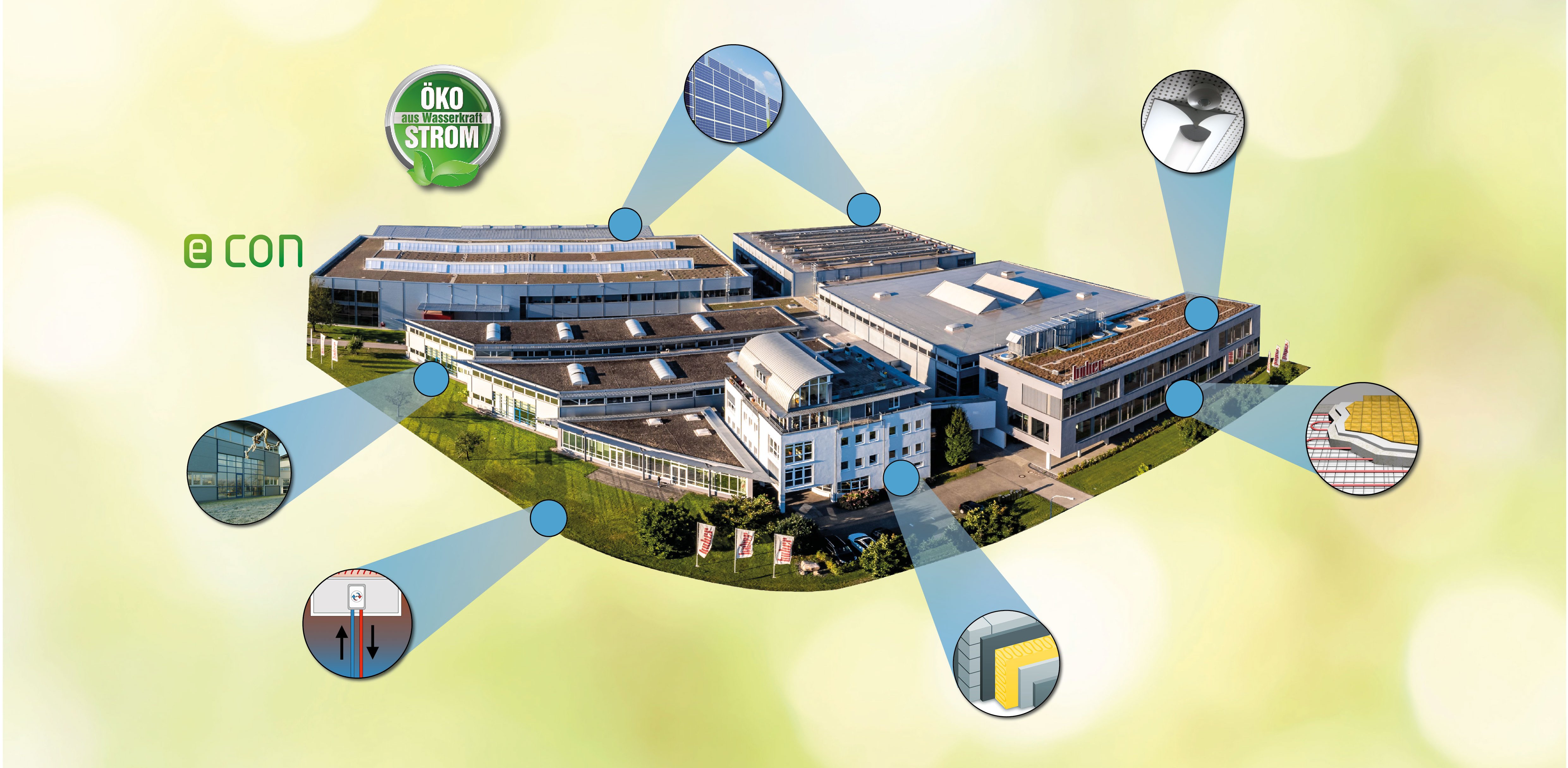The Tango factory
Would you expect that at Coca-Cola in Atlanta, caffeinated soda would pour from the faucets and beer at Bitburg in Rhineland-Palatinate, or that an “Entrecôte Double” would appear on the table as a staff meal in a 3-star restaurant? Probably not – no more than accordion sounds in 2/4 time at the Tango Factory, which was built in Elgersweier in 1998.
It nonetheless lives up to its name, because the principles of the Unistat® – “It takes two to tango” – were faithfully transferred to an industrial building. If the 40 kilometers of heating pipes are viewed as a heating spiral and the underfloor heating as a more effective contact to the heating body than a large radiator, for example, then in principle you have an oversized Unistat. In an area of 16300 m², 22 degrees centigrade are programmed in the administration and production units regardless of whether it’s freezing cold or sweltering outside. This too is pure tango, since it involves “closed temperature control”. The Tango Factory becomes state-of-the-art with applications such as insulated walls and triple glazing, use of solar power and night current, the deep well for an absolutely climate-friendly cooling cycle in the summer (zero water pollution on the side) as well as the waste heat created by the machines in test runs. There is a good reason that in his Handbook of Temperature Control, Peter Huber writes: “The orders from our customers warm us up.” That's the joker par excellence.

More precisely, the Tango Factory in Werner-von-Siemens-Strasse only uses half as much heating power as its much smaller predecessor in Ortenauer Strasse. Only a quarter of the water and gas are consumed, as external specialists have calculated. This is why the “Environmental Award for Companies 2016” by the state of Baden-Wuerttemberg was not only intended for the products from the Tango Factory but the Tango Factory itself, since it follows the same principles. Like so many other innovations, the energy concept with 100 percent eco-electricity, heat recovery etc., was not taken seriously at first. Tradespeople
already saw it coming: “That can’t work!” The answer came promptly: "We calculated everything." Of course it worked. Later there was talk of Peter Huber’s second masterpiece.








